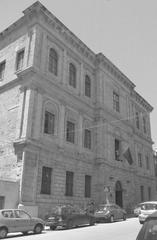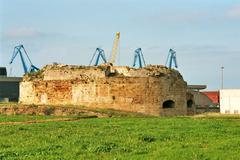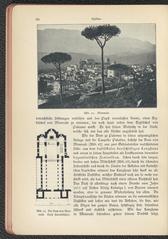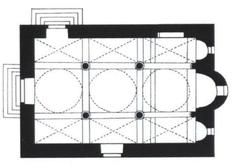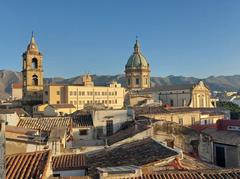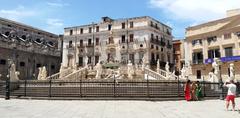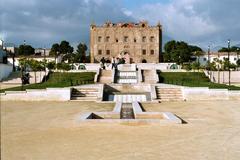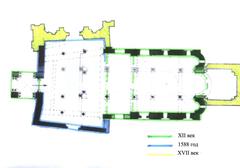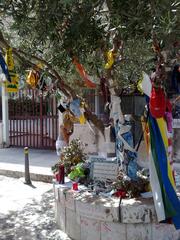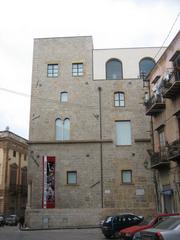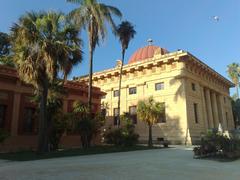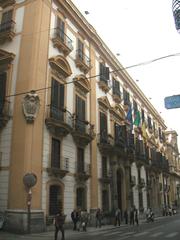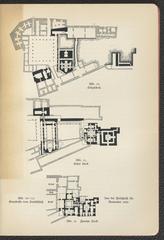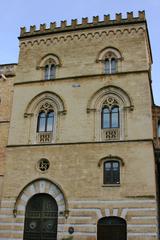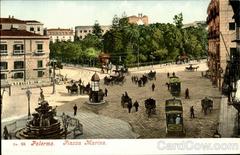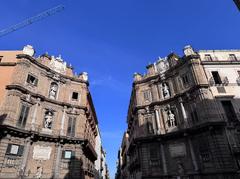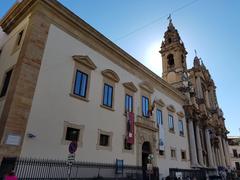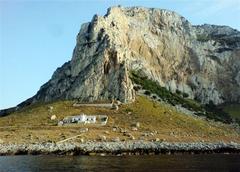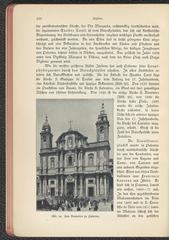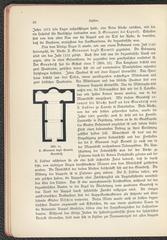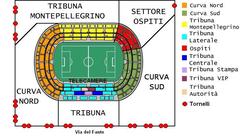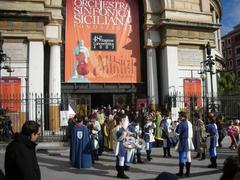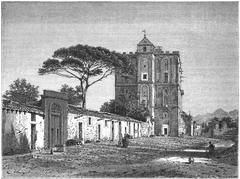Palazzo Abatellis: Visiting Hours, Tickets, and Complete Guide to Palermo’s Historical Gem
Date: 14/06/2025
Introduction
Palazzo Abatellis, a masterpiece of Gothic-Catalan architecture, stands at the heart of Palermo’s historic Kalsa district as a testament to the city’s rich artistic and cultural heritage. Once the noble residence of Francesco Abatellis, the palace now houses the Galleria Regionale della Sicilia—one of southern Italy’s most distinguished art museums. This comprehensive guide provides detailed insight into Palazzo Abatellis’s history, architecture, collections, visiting hours, ticketing, accessibility, and practical travel tips, ensuring visitors make the most of their experience at this iconic Palermo historical site (Siciliafan; palermo.for91days.com).
Table of Contents
- Origins and Construction
- Architectural Significance
- Historical Transformations
- From Noble Residence to Museum
- Collection Highlights
- Visiting Information
- Accessibility and Services
- Tips for Visitors
- Cultural Significance
- FAQs
- Conclusion
- References
Origins and Construction
Palazzo Abatellis, also known as Palazzo Patella, was commissioned in the late 15th century by Francesco Abatellis, port master of the Kingdom of Sicily. Designed by Matteo Carnilivari, an architect celebrated for blending Gothic and early Renaissance styles, the palace occupies a strategic location on Via Alloro, close to Palermo’s ancient commercial and administrative centers (Siciliafan; SpottingHistory).
Architectural Significance
An outstanding example of Gothic-Catalan architecture, Palazzo Abatellis features a monumental stone façade adorned with noble coats of arms, pointed arches, ribbed vaults, and a harmonious interplay between medieval and Renaissance motifs. The internal courtyard, surrounded by arcaded porticoes, provides both grandeur and light, while the noble floor’s deep-set windows and original wooden ceilings reflect the social status and cosmopolitan influences of its original owners (WhichMuseum; wonderfulitaly.eu).
Historical Transformations
Over centuries, Palazzo Abatellis witnessed significant changes. After serving as a noble residence, it became a convent and later a repository for confiscated religious art following the suppression of religious orders in 1866. The palace suffered heavy damage during World War II bombings, prompting a major restoration in the early 1950s led by architect Carlo Scarpa, whose museological vision transformed the building’s function while preserving its historical integrity (Siciliafan; SpottingHistory).
From Noble Residence to Museum
In 1954, Palazzo Abatellis became the official home of the Galleria Regionale della Sicilia. Scarpa’s innovative display strategies, including custom lighting and display cases, established a benchmark in museum design that respects both art and architectural context (WhichMuseum). The museum now offers a panoramic survey of Sicilian art from the 12th to the 18th centuries.
Collection Highlights
Medieval to Renaissance Masterpieces
- Triumph of Death Fresco: This vast, 15th-century fresco (c. 1445) is a haunting allegory of mortality, originally painted for Palazzo Sclafani and now displayed in a dedicated chapel (culturedvoyages.com).
- Antonello da Messina’s “Virgin Annunciate”: A Renaissance masterpiece celebrated for its psychological depth and technical finesse, often called “Sicily’s Mona Lisa.”
- Sculptures by Antonello Gagini and Francesco Laurana: Key examples of Sicilian Renaissance sculpture, such as the “Bust of a Gentlewoman” and religious statuary.
- Maiolica Ceramics and Decorative Arts: Collections of painted ceramics and precious objects illustrating Sicily’s artistic exchanges across the Mediterranean.
- Baroque Paintings: Works by Pietro Novelli, Van Dyck, and Luca Giordano, showcasing the evolution of Sicilian art into the Baroque era (wonderfulitaly.eu).
Visiting Information
Opening Hours
- Tuesday to Sunday: 9:00 AM – 7:00 PM (last admission at 6:30 PM)
- Closed on Mondays and select public holidays
- Check the official website for up-to-date information
Tickets
- Standard admission: ~€8
- Reduced: ~€4 for EU citizens aged 18-25
- Free: Children under 18, Palermo residents under 18, teachers, and disabled visitors
- Purchase: Onsite or online via official museum platforms
Location and Getting There
- Address: Via Alloro 4, Palermo, in the Kalsa district
- Public Transport: Easily accessible by bus or taxi; walkable from Palermo’s center
Accessibility and Services
- Accessibility: Wheelchair access, lifts, and ramps are available; some historic areas may be challenging—contact staff for assistance.
- Facilities: Restrooms, cloakroom, museum shop with art books and Sicilian crafts.
- Photography: Non-flash photography is generally permitted; tripods may require special permission.
Tips for Visitors
- Best times to visit: Weekday mornings or late afternoons to avoid crowds.
- Duration: Allocate 2–2.5 hours to fully appreciate the museum and palace.
- Nearby Attractions: Combine your visit with the Orto Botanico, Palermo Cathedral, Palazzo dei Normanni, and Ballarò Market for a rich cultural itinerary (culturedvoyages.com).
Cultural Significance
Palazzo Abatellis is more than a museum; it is a living monument to Sicily’s layered identity. Its collections trace the island’s artistic development from medieval to Baroque, reflecting influences from Greek, Roman, Arab, Norman, and Spanish civilizations. The museum also fosters social inclusion and contemporary cultural projects, maintaining its role as a vibrant center for art, education, and civic engagement (palermotoday.it; admin.liarumma.it).
Frequently Asked Questions (FAQ)
Q: What are the visiting hours of Palazzo Abatellis?
A: Tuesday to Sunday, 9:00 AM–7:00 PM; closed Mondays. Always verify on the official website.
Q: How can I buy tickets?
A: Tickets are available onsite or online via official channels.
Q: Is the museum accessible?
A: Yes, with lifts and ramps; some areas may have limited access.
Q: Are guided tours available?
A: Yes, in multiple languages; book via the museum’s website or local operators.
Q: Can I take photos inside?
A: Non-flash photography is generally allowed; ask staff about restrictions.
Q: What nearby attractions can I visit?
A: The Orto Botanico, Palermo Cathedral, and Ballarò Market are all close by.
Conclusion
Palazzo Abatellis offers an immersive journey through Sicily’s art, architecture, and history. Its blend of Gothic-Catalan design, Renaissance masterpieces, and innovative museum layout ensures a memorable visit for art lovers, historians, and travelers alike. Plan your visit by checking the latest information, book a guided tour for deeper insights, and explore the vibrant Kalsa district to complete your Palermo experience.
For more details and updates, refer to the official Palazzo Abatellis website and the Palermo Tourism Board. Download the Audiala app for curated guides and follow us on social media for news and events.
References and Further Reading
- Siciliafan
- SpottingHistory
- WhichMuseum
- palermo.for91days.com
- wonderfulitaly.eu
- culturedvoyages.com
- palermotoday.it
- admin.liarumma.it
- enjoysicilia.it
- passagetosicily.com
